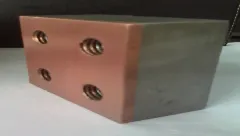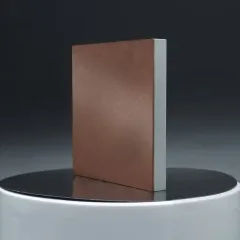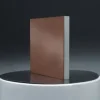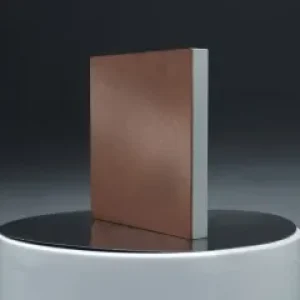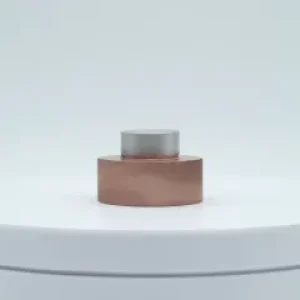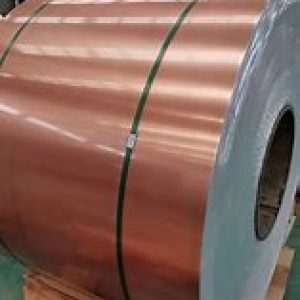Overview of Copper Clad Aluminum Sheet Plate
Copper/aluminum composite plate: An explosive composite plate is a composite material made of two metals, copper and aluminum, by explosive processing. This composite material has excellent electrical and thermal conductivity, corrosion resistance, low cost, and other advantages and is widely used in construction, electric power, automobiles, ships, and other fields. The structure of the copper/aluminum composite panel usually places the aluminum alloy plate on the copper plate and then welds the two together by welding. This composite material can withstand heavy loads while having high corrosion resistance to maintain its integrity and safety over time. It is a material used in buildings.
Advantage/Characteristics of Copper Clad Aluminum Sheet Plate
Copper/aluminum composite panels are composed of two materials with different properties, namely copper and aluminum. This composite material has many advantages, such as good antibacterial properties, high strength, lightweight, easy processing and molding, etc. It has good machinability and can be cut, cut and drilled according to actual needs. At the same time, the material also has high electrical and thermal conductivity, which can effectively improve the energy efficiency and comfort of buildings. Effectively improve the performance and quality of buildings, prolong their service life, and bring more ideas and choices to architects and users.
Applications of Copper Clad Aluminum Sheet Plate
Automobiles: Copper/aluminum composite panels are widely used in the automotive industry, such as engines, exhaust systems, radiators, etc., which can improve car performance and life.
Home appliances: Copper/aluminum composite panels are widely used in the home appliance industry, such as rice cookers, electric kettles, induction cookers, and other parts, and they can improve the performance and service life of home appliances.
Aerospace: Copper/aluminum composite panels are widely used in the aerospace industry, such as aircraft engines, fuel systems, transmission systems, etc., and can improve aircraft performance and reliability.
Chemical industry: Copper/aluminum composite panels are widely used in the chemical industry, including pipelines, valves, pumps, and other parts, and they can improve the performance and reliability of chemical equipment.
Medical equipment: Copper/aluminum composite panels are widely used in the medical equipment industry, such as surgical instruments, medical beds and other parts, which can improve the performance and safety of medical equipment.
Electronics industry: Copper/aluminum composite boards are widely used in the electronics industry, such as circuit boards, resistors, capacitors and other parts, which can improve the performance and reliability of electronic components.
Grade of Copper Clad Aluminum Sheet Plate
T2.T3.TP1,TP2.TU1,TU2.H80.H62.QSn6.5-0.1.BFe30-1-1.BFe10-1-1
1A97.1A93.1A90.1A85,1070.1060.5083
Standard of Copper Clad Aluminum Sheet Plate
NB-T 47002.4-2009
Company Profile
Metal Plates 4u is a trusted global chemical material supplier & manufacturer with over 12-year-experience in providing super high-quality copper and relatives products.
The company has a professional technical department and Quality Supervision Department, a well-equipped laboratory, and equipped with advanced testing equipment and after-sales customer service center.
If you are looking for high-quality metal Cladding Panel and processing service, please feel free to contact us or click on the needed products to send an inquiry.
Payment Methods of Copper Clad Aluminum Sheet Plate
L/C, T/T, Western Union, Paypal, Credit Card etc.
Shipment of Copper Clad Aluminum Sheet Plate
It could be shipped by sea, by air, or by reveal ASAP as soon as repayment receipt.
Package of Copper Clad Aluminum Sheet Plate
According to product characteristics and customer needs.
Remark of Copper Clad Aluminum Sheet Plate
Please provide detailed technical requirements to facilitate communication and determine the solution.
FAQ
Question: What are the advantages of copper-aluminum composite panels compared to pure copper panels and pure aluminum panels?
Answer: Copper-aluminum composite panels have the advantages of both copper and aluminum. Compared with pure copper plates, it is lighter and cheaper; compared with pure aluminum plates, it performs better in conductivity and corrosion resistance.
Question: What is the manufacturing process of copper-aluminum composite panels?
Answer: The production process mainly includes pretreatment, composite rolling, heat treatment and other steps. Pretreatment involves surface cleaning and preparation; during the composite rolling process, the copper plate and aluminum plate are closely bonded through rolling; heat treatment further improves the performance of the composite plate.
Question: What is the electrical conductivity of copper-aluminum composite panels?
Answer: Copper-aluminum composite panels have good electrical conductivity due to the presence of the copper layer. In electrical applications, it can meet most conductive performance requirements.
Question: What is the corrosion resistance of copper-aluminum composite panels?
Answer: Copper-aluminum composite panels have good corrosion resistance, and the presence of the aluminum layer enhances its ability to resist corrosion. However, the specific corrosion resistance also depends on its surface treatment and the environment in which it is used.
Question: What is the strength of copper-aluminum composite panels?
Answer: The strength of copper-aluminum composite panels mainly depends on its composite structure and material selection. In the plane direction, it usually shows higher strength; but in the thickness direction, since the connection between copper and aluminum is achieved through weaker chemical bonds, its strength may be relatively low.
Question: Can copper-aluminum composite panels be welded?
Answer: Yes, copper-aluminum composite panels can be welded with appropriate welding processes. However, attention needs to be paid to selecting appropriate welding methods and parameters to ensure the quality and performance of the welded joints.

